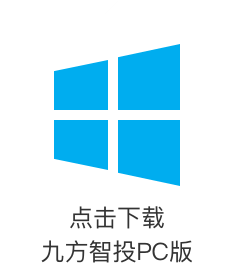2024 results slightly beat our expectations
China Jushi announced its 2024 results: Revenue rose 6.6% YoY to Rmb15.9bn and attributable net profit fell 20% YoY to Rmb2.4bn. Recurring attributable net profit dropped 6% YoY to around Rmb1.8bn, in line with our expectations. Attributable net profit slightly beat our expectations, as the firm reversed Rmb0.3bn of unutilized provisions made for its excess profit-sharing plan.
Roving sales volume exceeded 3mnt; net profit per tonne recovered marginally in 4Q24. According to the company, its revenue from glass fiber and products rose 7% YoY to Rmb15.5bn in 2024, gross margin fell 3ppt YoY to 24%, and sales volume of roving and products rose 22% YoY to 3.03mnt in 2024, with sales volume growth outpacing the industry average and export growth encouraging. We estimate the firm’s net profit of roving exceeded Rmb500/t in 2024, with net profit recovering by about Rmb100/t QoQ in 4Q24. The firm’s full-year sales volume of electronic fabric rose slightly YoY to 875mn meters, and sales improved markedly QoQ in 4Q24. We estimate the firm’s full-year net profit of electronic fabric at Rmb0.3-0.4/sqm.
Earnings at Egypt base resilient; losses at US base narrowed in 2H24. According to the company, its Egypt production base generated revenue of Rmb1.7bn and net profit of Rmb0.32bn in 2024, with a net margin of 19%, edging down from 2023 but still higher than domestic earnings. The US base recorded revenue of Rmb0.79bn and a loss of Rmb28.05mn, narrowing notably compared with the Rmb27.28mn in 1H24 and Rmb0.77mn in 2H24).
Operating cash flow and inventory turnover days improved; proposed a medium-term profit distribution plan for 2025. Net operating cash flow improved markedly YoY to Rmb2.03bn in 2024, and we estimate that the cash-to-revenue ratio remained largely stable at 76% and the net cash-flow ratio rose sharply YoY to 83%, implying marginal easing of cash pressure. In addition, the firm’s inventory turnover days fell 14 days YoY to 132 days in 2024. According to the firm’s announcement, it proposed a medium-term profit distribution plan for 2025, planning to distribute a cash dividend of no less than 40% and no more than 45% of the attributable net profit in the current period, provided that conditions for profit distribution are met.
Trends to watch
Price hikes of multiple product categories have driven a recovery in earnings; infrastructure construction in Europe to boost overseas sales volume and prices. In addition to the gradual price hikes of wind power, thermoplastics and electronic fabrics, we suggest watching the following: 1) Supposing that companies will shift to rational production based on changes in marginal costs and earnings, we think downstream restocking demand may lead to price hikes in 2Q25. According to sci99.com, the mainstream tax-inclusive price of roving in eastern China is Rmb3,800 (up Rmb100 QoQ). We see upside in this price as we think inventory turnover days of ordinary roving at distributors may increase further by 1-1.5 months. 2) We believe that infrastructure construction in the EU, reconstruction demand in Ukraine, and normalized growth of fiberglass demand in Europe will boost demand for roving at an annualized rate of 100,000t. The firm’s base in Egypt has a total capacity of 360,000t, mainly covering the European market.
Financials and valuation
Given price hikes of high-end fiberglass products, we raise our 2025 EPS forecast 5% to Rmb0.88 and introduce our 2026 EPS forecast of Rmb1.01. The stock is trading at 14x 2025e and 12x 2026e P/E. We maintain an OUTPERFORM rating. Considering that valuations may trend upwards amid an uptrend in the fiberglass business, we raise our target price 10% to Rmb14.9 (17x 2025e and 15x 2026e P/E), offering 20% upside.
Risks
Recovery in demand disappoints; capacity expansion of new production lines beats expectations.













